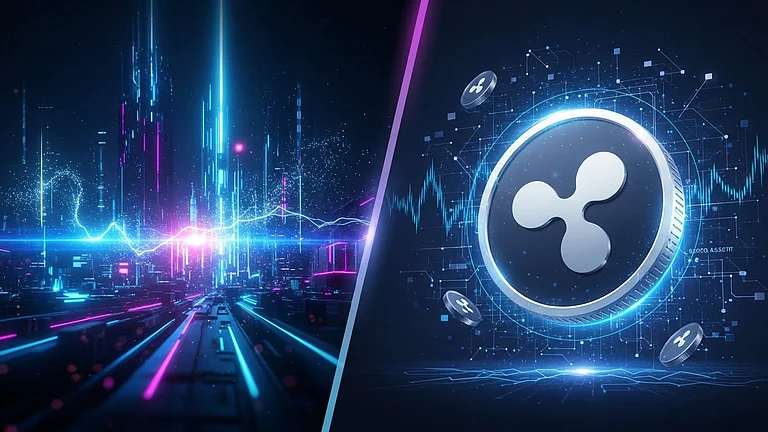The cryptocurrency market is a cyclic one, but not all tokens move up or down at the same time. As Bitcoin and Ethereum dominate the headlines, other sectors-DeFi in particular, along with gaming and AI tokens-manage to take turns leading the market.
Through a given cycle, investor attention, media coverage, and liquidity are captured by one of these sectors as the "hot narrative" at any given time. But every new trend that peaks seems to be replaced by another. Why does this happen? What creates this rotation of leadership among these categories?
This article discusses the economic, psychological, and structural motivations for this rotation, the position of Altcoins, how investors interpret such shifts, followed by practical insights, pros, and cons, and questions often asked.
Understanding Sector Rotation in Crypto
Unlike more traditional markets, crypto is heavily driven by narratives and innovation cycles. A new technological breakthrough or idea can see capital move quickly from one sector to another. When a narrative starts to mature or cools down, money inevitably moves to the new hot opportunity, thus creating what's called sector rotation.
In traditional finance, sector rotation occurs when investors move from one industry (like tech) to another (like energy) based on macroeconomic conditions. In crypto, this rotation is faster and more sentiment-driven, often triggered by developments such as protocol upgrades, new token launches, or broader technology trends.
The Role of Market Narratives
Powerful drivers of value in the crypto ecosystem are the narratives. Every sector-whether DeFi, gaming, or AI-represents a story about what the future may hold for blockchain technology.
DeFi tokens narrate a story about building an alternative financial system sans banks.
Gaming tokens present digital ownership, metaverse economies, and play-to-earn models.
AI tokens promise a merger of artificial intelligence and decentralized data networks.
When one of those stories really catches on with the community or media, then investors pile in, creating rapid price appreciation. When enthusiasm wanes, the market moves on to the next "big story," and rotation to another theme occurs.
Capital Flows and Value Rotation
The crypto market is constrained by total liquidity. As one sector increases in capital and its prices go up, potential future returns shrink. Then, institutional and retail investors rotate into undervalued sectors.
For instance:
When DeFi protocols generate strong yields and attract liquidity, prices rise quickly.
After profits are realized, investors may move into gaming tokens, anticipating the next big use case.
As AI gains attention globally, AI-linked tokens become the next target for speculative capital.
This movement of money between sectors fuels periods of alternating leadership. The phenomenon is similar to how investors diversify within the stock market — but crypto's rotations occur much faster.
Market Cycles and Risk Appetite
With each crypto bull or bear phase, risk tolerance changes accordingly.
In early bull markets, investors favor safer, more established tokens like Bitcoin or Ethereum.
Altcoins, especially DeFi and gaming projects with strong fundamentals, come into focus as confidence grows.
In the later stages, speculative tokens, which are usually newer and less proven, can surge as traders chase high-risk, high-reward opportunities.
When the market becomes cautious, investors pull out of those volatile areas first, rotating back into safer assets. This is a repetitive pattern that explains why the leadership in the crypto market continuously shifts among different sectors.
Innovation and Sector Catalysts
Each sector has its innovation triggers, which may then independently attract investors.
Examples include:
DeFi: Mainnet launch of some yield-generating protocols, real-world asset integrations, or layer-2 upgrades.
Gaming: Introduction of new metaverse platforms, NFT integrations, or token economy redesigns.
AI tokens: Breakthroughs in AI-blockchain synergies, decentralized AI models, or data-sharing networks.
When an industry introduces new, cutting-edge technology or partnerships, it is usually the leader in the market until focus is diverted elsewhere.
How These Rotations Typically Unfold
Below is a generalized outline of what the rotation amongst DeFi, gaming, and AI tokens usually looks like:
Emergence: A new theme, for instance, is the integration of AI, which garners minor attention.
Building Momentum: Growth potential identified by early adopters and analysts.
Mainstream Hype: Media coverage, influencer attention, and retail inflows surge.
Peak Phase: Valuations stretch, profit-taking begins.
Prices stabilize or drop.
Rotation: Capital rotates to a new sector, probably gaming or DeFi; the new cycle starts.
In the middle of this process, Altcoins play an important role. During "altcoin season," capital tends to flow from large-cap assets into smaller thematic tokens — often those in DeFi, gaming, or AI categories — thereby amplifying this rotation effect.
Comparison of DeFi, Gaming, and AI Tokens
Sector | Key Catalysts | Why It Leads | Why It Loses Momentum |
DeFi | Yield protocols liquidity incentives real-world assets | Offers tangible use cases and on-chain revenue | Regulatory uncertainty yield compression |
Gaming | Game launches NFT integration metaverse projects | Mass adoption potential through entertainment | Weak gameplay token inflation hype burnout |
AI Tokens | AI integrations data sharing new partnerships | Aligns with global AI boom | Technical limitations lack of adoption |
This table highlights how each sector’s success depends on unique catalysts — and how overexposure can quickly lead to a shift in leadership.
Pros and Cons of Sector Rotation Strategy
Pros
Potential for higher returns by identifying early trends.
Diversification across emerging technologies.
Exposure to evolving blockchain use cases.
Cons
Requires constant monitoring and quick decision-making.
High volatility and unpredictable sentiment swings.
Easy to enter too late, after most of the gains have occurred.
Not all themes recover after hype fades.
A disciplined approach — combining narrative awareness with data — is essential for navigating these rotations responsibly.
Understanding the Importance of Altcoins
Midway through every crypto bull run, attention shifts from Bitcoin and Ethereum to Altcoins — smaller-cap tokens offering higher growth potential. DeFi, gaming, and AI projects are prime examples of such altcoins.
When Bitcoin stabilizes or slows down, traders often look for higher returns in these alternative assets. As capital flows into them, they outperform the broader market, marking what many call “altcoin season.”
However, these gains are usually temporary. As narratives evolve or profit-taking begins, leadership shifts again — illustrating how Altcoin-driven cycles are both powerful and short-lived.
How Investors Can Analyze Rotations
To better understand and potentially anticipate sector shifts, investors can monitor:
Social trends: Increases in social media mentions or search interest around a sector.
Development activity: New partnerships, code commits, or project updates.
On-chain data: Growth in users, transactions, or liquidity (TVL).
Market structure: Overheated valuations may hint at an upcoming rotation.
Sentiment indicators: Funding rates, Google Trends, or trading volumes across sectors.
These metrics don’t guarantee success but provide useful context for understanding where capital might move next.
Conclusion
DeFi, gaming, and AI tokens take turns leading the crypto market because each sector goes through its own innovation cycle, investor enthusiasm, and profit-taking phase. The combination of narratives, liquidity flows, and risk appetite drives capital from one theme to another.
For investors and enthusiasts, understanding this rotation is less about predicting the next winner and more about recognizing the patterns of market psychology. As new technologies evolve, leadership will continue to rotate — making education, analysis, and patience more valuable than speculation alone.
In the fast-changing world of Altcoins, staying informed about sector trends is one of the best ways to navigate the constant rhythm of innovation and rotation that defines the crypto ecosystem.
Frequently Asked Questions (FAQs)
1. What causes one crypto sector to outperform another?
Sector performance depends on new technological developments, strong narratives, and investor sentiment. For example, if AI technology gains global attention, AI-linked tokens may rally before capital moves elsewhere.
2. How can I identify when a sector is becoming overheated?
Watch for rapid price increases without corresponding user or developer growth. Excessive social media hype and rising funding rates often signal a peak.
3. What role do Altcoins play in these rotations?
Altcoins act as vehicles for narrative-driven growth. When Bitcoin stabilizes, capital often flows into smaller altcoins — including DeFi, gaming, and AI tokens — triggering sector rotation.
4. Are AI and gaming tokens riskier than DeFi tokens?
Generally, yes. DeFi tokens are often tied to measurable activity like lending or staking. Gaming and AI tokens may rely more on speculation and unproven models, making them more volatile.
5. Can sector rotation be predicted accurately?
Not precisely. While data and sentiment analysis can offer clues, timing rotations consistently is difficult. A diversified approach and awareness of emerging narratives can help reduce risk.

























